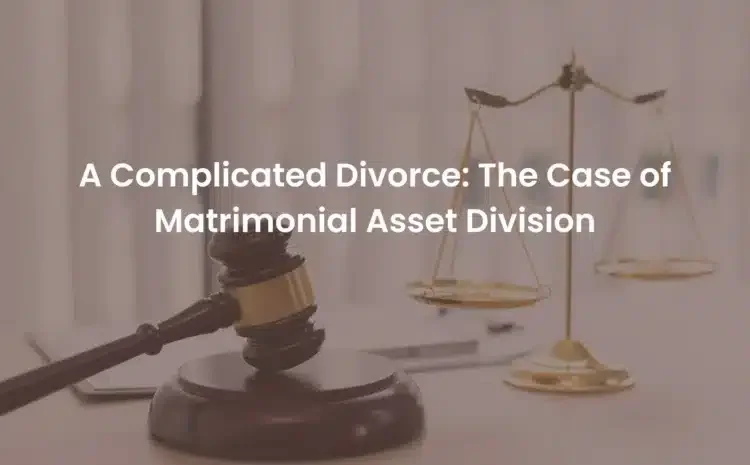A Complicated Divorce: The Case of Matrimonial Asset Division
Divorce can be a tumultuous and emotionally charged process, particularly when substantial assets are involved. This was vividly illustrated in the recent high-profile case of a 64-year-old unemployed man and his 62-year-old ex-wife, a company director, who disputed over assets worth $7.8 million following the dissolution of their 30-year marriage.
The Financial Dispute
At the heart of this case were the proceeds from the $6.2 million sale of their house in 2022 and the overall division of matrimonial assets. Despite having been unemployed since 1997, the husband claimed a 50% share, asserting his role as the primary homemaker. Conversely, the wife, earning $32,500 monthly, sought 80%, emphasizing her financial and non-financial contributions.
The Court’s Decision
In a judgment delivered on June 24, Justice Teh Hwee Hwee awarded the wife 60% of the assets, leaving the husband with 40%. This decision took into account the extent of each party’s contributions—both financial and non-financial—to the family.
Justice Teh acknowledged the husband’s financial input during the early years of the marriage, which helped establish their initial home and subsequently grow their assets. She also recognized his role in caring for the children, despite his wife’s assertions that he was not primarily a homemaker.
Contributions Beyond Finances
The case underscored the complexities of measuring non-financial contributions within a marriage. The wife argued that, in addition to being the sole breadwinner, she handled various household responsibilities, including grocery shopping, planning family trips, and overseeing home renovations. She emphasized her role as the primary caregiver to their children, a claim supported by their testimonies.
The children, aged 25, 30, and 33, spoke highly of both parents. They described their mother as a strong, reliable, and attentive parent who managed to balance her professional and domestic roles effectively. They also recounted their father’s dedication and presence, highlighting his significant contributions to their upbringing.
Lessons Learned
This case offers several important lessons for those navigating the complexities of marriage and divorce:
Recognize Contributions Early: Both financial and non-financial contributions are crucial in a marriage. Acknowledging and appreciating these efforts early can help maintain balance and mutual respect.
The Importance of Clear Communication: The deterioration of communication between the couple significantly impacted their relationship. Maintaining open and honest dialogue can prevent misunderstandings and foster a healthier partnership.
Consider Ending Unhappy Marriages Sooner: Prolonging an unhappy marriage can complicate matters further, especially when significant indirect contributions accumulate over time. If a marriage becomes irreparably strained, it might be wise to consider ending it earlier to mitigate future complications.
Equitable Distribution of Assets: The court’s decision in this case highlights the importance of equitable, rather than equal, distribution of assets. The contributions of each spouse—whether financial or homemaking—are vital considerations in determining a fair division.
Moving Forward
As Justice Teh noted, despite the end of their marriage, both parties successfully provided their children with a stable and loving environment. Moving forward, it is essential for divorced couples to find common ground and support each other, especially in co-parenting roles. Healing and maintaining a positive relationship post-divorce can significantly benefit the entire family.
This case serves as a poignant reminder of the complexities involved in matrimonial disputes and the importance of acknowledging all forms of contribution within a marriage. It also emphasizes the value of timely decision-making and effective communication in maintaining a healthy and balanced relationship.

